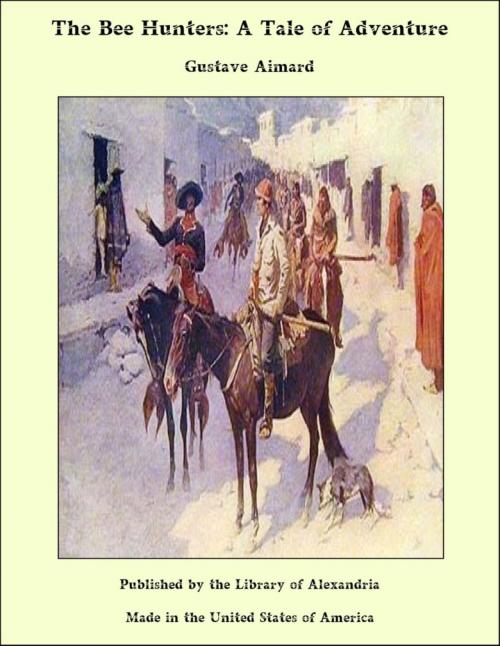The Bee Hunters: A Tale of Adventure
Nonfiction, Religion & Spirituality, New Age, History, Fiction & Literature| Author: | Gustave Aimard | ISBN: | 9781465602664 |
| Publisher: | Library of Alexandria | Publication: | March 8, 2015 |
| Imprint: | Language: | English |
| Author: | Gustave Aimard |
| ISBN: | 9781465602664 |
| Publisher: | Library of Alexandria |
| Publication: | March 8, 2015 |
| Imprint: | |
| Language: | English |
Since the discovery of the goldfields in California and on the Fraser River, North America has entered into a phase of such active transformation, civilisation has advanced with such giant strides, that only one region is still extant—a region of which very little is known—where the poet, or the dreamer who delights in surrounding himself with the glories of nature, can revel in the grandeur and majesty, which are the great characteristics of the mysterious savannahs. It is the only country, nowadays, where such men can sate themselves with the contemplation of those immense oceans of alternate verdure and sand, which spread themselves out in striking contrast, yet wonderful harmony,—expanding, boundless, solemn, silent, and threatening, under the eye of the omnipotent Creator. This region, in which the sound of the squatter's axe has not yet roused the slumbering echoes, is called the Far West. Here the Indians still reign as masters, tracing paths on rapid mustangs, as untamed as their riders, through the vast solitudes, whose mysteries are known only to themselves; hunting the bison and wild horse, waging war with each other, or pursuing with deadly enmity, the white hunters and trappers daring enough to venture into this last formidable refuge of the redskins. On the 27th July, 1858, about three hours before sunset, a cavalier, mounted on a magnificent mustang, was carelessly following the banks of the Rio Bermejo, a tributary of the Rio Grande del Norte, into which it falls after a course of from seventy to eighty leagues across the desert. This cavalier, clad in the leather dress worn by Mexican hunters, was, as far as one could judge, a man not more than thirty years of age, of tall and well-knit frame, and graceful in manner and action. His face was proud and determined; and his hardy features, stamped with an expression of frankness and good nature, inspired, at first sight, respect and sympathy.
Since the discovery of the goldfields in California and on the Fraser River, North America has entered into a phase of such active transformation, civilisation has advanced with such giant strides, that only one region is still extant—a region of which very little is known—where the poet, or the dreamer who delights in surrounding himself with the glories of nature, can revel in the grandeur and majesty, which are the great characteristics of the mysterious savannahs. It is the only country, nowadays, where such men can sate themselves with the contemplation of those immense oceans of alternate verdure and sand, which spread themselves out in striking contrast, yet wonderful harmony,—expanding, boundless, solemn, silent, and threatening, under the eye of the omnipotent Creator. This region, in which the sound of the squatter's axe has not yet roused the slumbering echoes, is called the Far West. Here the Indians still reign as masters, tracing paths on rapid mustangs, as untamed as their riders, through the vast solitudes, whose mysteries are known only to themselves; hunting the bison and wild horse, waging war with each other, or pursuing with deadly enmity, the white hunters and trappers daring enough to venture into this last formidable refuge of the redskins. On the 27th July, 1858, about three hours before sunset, a cavalier, mounted on a magnificent mustang, was carelessly following the banks of the Rio Bermejo, a tributary of the Rio Grande del Norte, into which it falls after a course of from seventy to eighty leagues across the desert. This cavalier, clad in the leather dress worn by Mexican hunters, was, as far as one could judge, a man not more than thirty years of age, of tall and well-knit frame, and graceful in manner and action. His face was proud and determined; and his hardy features, stamped with an expression of frankness and good nature, inspired, at first sight, respect and sympathy.















